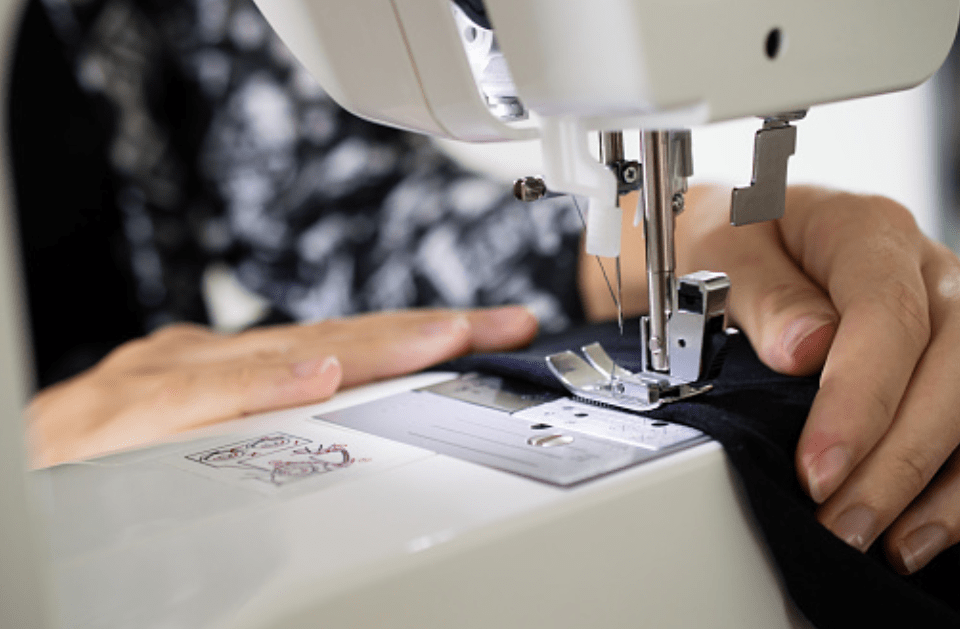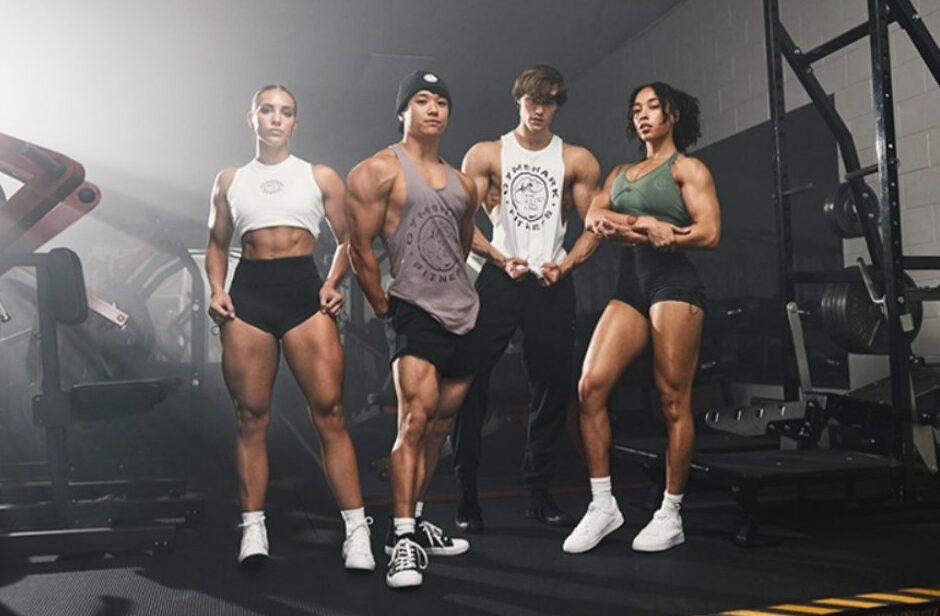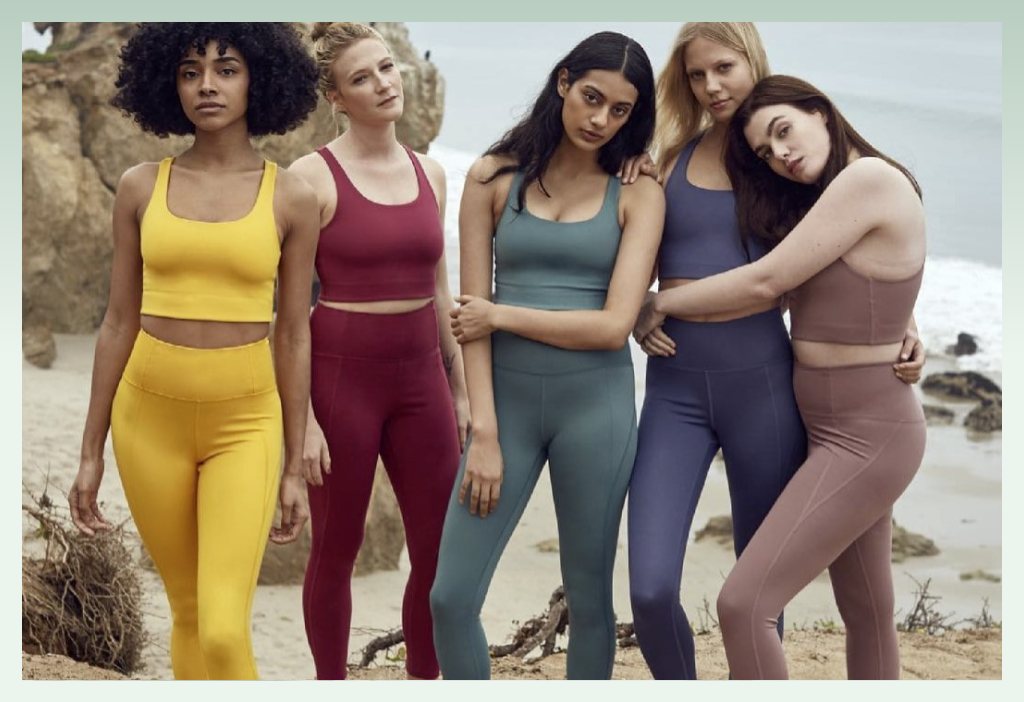I’ve been chasing the perfect workout shirt: one that’s tough but still soft. If you’ve ever struggled to find a shirt that’s comfortable and eco-friendly, this might be your answer. That’s when I discovered the magic of blending hemp with organic cotton. This natural combo brings together the best of both worlds. It means clothes that can handle tough workouts yet still feel soft against the skin. In this article, I’ll share why this blend is such a game changer for activewear.
Blending hemp with organic cotton creates activewear that is both extremely durable and amazingly comfortable. Hemp fibers add strength, natural moisture-wicking, and odor resistance even after tough workouts. Organic cotton keeps the fabric soft, breathable, and gentle on the skin. Together, they greatly reduce environmental impact by using far less water and no harsh chemicals. The result? Activewear that’s strong, cozy, and more eco-friendly than regular workout gear – a win for athletes, brands, and the planet. Over time these fabrics even get softer with each wash, so they keep getting better. They deliver a premium feel that customers love, helping brands stand out.
Now that we’ve covered the highlights, let me explain why this mix is so special. From unbeatable strength and softness to helping the planet, each part of this blend has a role to play. We’ll break down each benefit one by one.
Why blend hemp and organic cotton for strength and softness in activewear?
When I first felt a hemp-cotton blend, I was amazed at how tough and soft it was at the same time. Hemp brings durability and strength to the fabric, while organic cotton adds a gentle, cozy feel. Together they make the perfect gym shirt: strong enough to last through hard workouts, yet so soft you barely notice you're even wearing it. Let’s dig into how this powerful pair works in activewear.
Hemp fibers are famous for their toughness – even being nearly twice as strong as cotton. They add strength and durability to activewear so your clothes last longer. Organic cotton, on the other hand, is soft and gentle on skin, providing comfort during exercise. When you blend the two, you get activewear that feels smooth and cozy but can handle heavy use. This means a gym shirt that resists tearing, holds its shape, and even becomes softer with each wash. Plus, because hemp fibers don’t pill easily, your favorite activewear stays looking fresh longer. The result? Activewear that truly has the best of both worlds.
When I first heard that hemp fabrics could actually soften with use instead of wearing out, I was skeptical. We had always known hemp as the tough, rugged fiber behind things like canvas and fishing nets. But by weaving hemp with organic cotton, something magical happened. In practice, this blend feels like a fabric superhero – it’s strong as an ox but gentle as a cloud on your skin.
Durability and Strength
Think of hemp as the backbone of a shirt. Its fibers have almost twice the tensile strength of regular cotton, so it resists tearing and abrasion. Imagine doing burpees or pull-ups all week – a hemp-cotton shirt might come through with barely a scuff, while a pure cotton shirt could look tired. I remember tossing one of our hemp blend prototypes through rough wash cycles; after dozens of washes it still felt sturdy, while a 100% cotton shirt started to thin or stretch out.
Softness and Comfort
Organic cotton in the mix does the heavy lifting for comfort. Cotton has a super soft touch and great breathability. It cradles your skin and prevents chafing during long runs or intense gym sessions. When these two fibers hug each other in the fabric, you get a silky-smooth feel with built-in armor. As someone who hates itchy gym clothes, I love how our hemp-cotton shirts actually feel better over time. They almost purr against your skin instead of feeling scratchy. It’s like this: hemp provides the muscle and organic cotton the cushion.
Many people notice the fabric wears in, not out. After the first wash, a hemp-cotton shirt might feel a bit stiff, but after a few more washes it transforms. It softens and becomes more flexible, but it never loses its toughness.
| Property | Hemp Fiber | Organic Cotton | Hemp/Cotton Blend |
|---|---|---|---|
| Strength | Very high (hemp ~2× cotton) | Moderate | High (stronger than cotton) |
| Softness | Coarse at first, softens later | Very soft | Soft and smooth |
| Durability | Excellent (resists wear and tear) | Good (can tear or thin over time) | Excellent (outlasts cotton) |
| Longevity | Very long (we’ve seen 10+ years) | Fair (~3–5 years typical) | Long (usually exceeds cotton) |
| Shape Retention | Good (shrinks once, then stable) | Moderate (can stretch/shrink) | Good (holds shape well) |
This table is a quick snapshot of why the blend works so well. For you as a brand or buyer, there are clear benefits. The hemp-cotton fabric acts like an upgrade over pure cotton: it’s more forgiving in use. Fewer rips and holes mean happier customers and less waste. Clients sourcing our hemp blends often report needing fewer replacements and returns – a big win for both budget and reputation.
On a practical note, hemp blends tend to shrink just once in the first wash, then hold their size. Pure cotton, by contrast, can stretch or shrink unpredictably later. Because hemp gives the blend stability, sizing stays consistent – no angry customers because their shirt mysteriously shrunk a size after one wash!
Blending these fibers takes some care. We have to match yarn weight and twist so the fabric drapes right. In our workshop, we test different weave patterns and stitch tensions to find the sweet spot. Often, a mix around 50/50 or 55/45 (hemp to cotton) hits the balance perfectly. When done right, there’s no gimmick – just straightforward improvement.
In summary, mixing hemp with organic cotton in activewear is like giving your clothes a best-of-both-worlds superpower. You get the strong backbone of hemp together with the cozy softness of cotton. The result is activewear that stands up to tough workouts while still feeling amazing to wear. It’s a win-win I can’t imagine living without.
Why are hemp and organic cotton sustainable choices for activewear?
When I switched our production to hemp and organic cotton, one thing became clear: activewear can be green. Hemp plants thrive with almost no pesticides and much less water than conventional crops. Hemp grows quickly and tall, producing a lot of fiber even on poor soil. Organic cotton farming avoids toxic pesticides and helps keep soil healthy. Together, they shrink our environmental footprint. It’s a blend that’s not only kind to the planet but also appealing to eco-conscious customers.
Hemp and organic cotton are sustainability stars. Hemp plants grow fast with minimal water and almost no pesticides. Organic cotton is grown without harsh chemicals and supports healthy soil. Together this blend slashes environmental impact by using far less water and producing a smaller carbon footprint than conventional fabrics. Both fibers are biodegradable, so they won’t add to landfill waste. Compared to regular cotton, a hemp-cotton blend can require up to 50% less water and avoids harmful chemical runoff. In short, hemp-cotton activewear offers high performance and planet-friendly credentials, making it a smart choice for eco-aware brands and consumers alike.
Growing hemp and organic cotton is good news for the planet. Hemp plants require far less water than conventional cotton – sometimes half or less for the same yield – and they need almost no pesticides. In fact, hemp gives back to the soil; after harvesting, its deep roots help aerate the ground. Hemp and cotton both capture carbon as they grow, further cutting the carbon footprint of our clothing. Organic farming methods protect soil and wildlife.
Because of these traits, a hemp-cotton blend can dramatically reduce the environmental impact of activewear. For example, one study showed that creating a hemp fabric used about 20-30% of the water and energy needed for conventional cotton fabric. The blend also means less fertilizer runoff and pesticide pollution – a big deal for communities and ecosystems. And since both hemp and organic cotton are biodegradable, your leggings won’t hang around in a landfill forever.
To sum up, hemp and organic cotton shine in sustainability. Hemp yields more fiber per acre and needs fewer resources, while organic farming protects soil and wildlife. The combined result is activewear with a much smaller eco-footprint. It’s easy to feel good selling gear you know helps save water, avoids chemicals, and even absorbs CO₂ as it grows.
But sustainability is just one piece of the puzzle. The real test is how this blend performs in action. Next, we’ll explore how hemp and cotton work together to manage sweat, improve breathability, and keep you comfortable during any workout. Let’s sweat it out and find out.
How do hemp-cotton blends keep you dry and comfortable during workouts?
Ever finished a run or hike drenched in sweat? I have—and it’s no fun. Hemp and cotton make an excellent team at sweat management. Hemp fibers naturally pull moisture away and dry quickly. Organic cotton adds softness and lets air flow. Together, they create activewear that wicks sweat better than plain cotton and feels cooler on the skin. On hot days, I’ve noticed hemp-cotton shirts stay much fresher than ordinary cotton. Let’s dive into why.
Hemp-cotton blends are a secret weapon against sweat. Hemp fibers absorb moisture from the body and spread it through the fabric to evaporate quickly, while cotton adds softness and breathability. The result is a shirt that doesn’t cling or feel drenched when you sweat. In practice, this means activewear that stays cooler longer – even during intense workouts. The blend’s open weave and natural fibers allow more airflow than typical synthetic gear. In short, hemp-cotton activewear helps keep you dry and comfortable, even on the sweatiest days.
Natural Moisture Control
Hemp and cotton each handle moisture a bit differently, but together they form a great team. Think of hemp fibers as little straws that draw sweat away from your body. They can absorb water and then quickly pass it to the fabric surface to evaporate. Organic cotton is already comfy on its own, but it helps give the fabric an airy feel. The open structure of a hemp-cotton weave lets air circulate, keeping you cool.
In practice, this means sweat won’t stay trapped against your skin. I remember one hot summer run – my hemp-cotton shirt felt damp but never heavy, and it dried fast afterwards. Meanwhile, my cotton shirt stuck to me and took ages to dry. That’s the breathability in action.
To break it down:
- Moisture-Wicking: Hemp fibers naturally pull sweat away and spread it out, preventing soggy patches.
- Quick Drying: Because hemp moves moisture to the surface, it evaporates sooner and you stay drier.
- Airflow: The blend’s looser weave means more air can flow through the fabric, cooling you off.
- Temperature Control: The fabric feels fresh in the heat but also retains a bit of warmth when it’s cool – it adjusts to you.
Compare this to pure cotton or synthetic fabric. Cotton alone soaks up water but can stay wet longer. Polyester wicks but feels less natural. The hemp-cotton blend gives you the best of both worlds: natural comfort plus performance. Your skin literally breathes better in it.
For example, one of our clients tested 100% cotton, a polyester blend, and our hemp-cotton shirt under the same workout. The hemp shirt was noticeably cooler to the touch right after, and athletes said it felt more comfortable. Plus, because it dries faster, it stays smelling fresher. (More on that next.)
Alright, we’ve handled sweat and smells — now let’s talk style. Next, we’ll explore how this blend gives designers flexibility, creating activewear that looks great and performs well. From color vibrancy to fabric texture, we’ll see why this blend is becoming a favorite in modern activewear.
How do hemp’s natural antimicrobial properties help reduce odor in activewear?
I always dreaded the pungent smell my workout gear would develop after a few uses. Then I discovered hemp’s secret: it has natural antimicrobial properties. This means it fights the odor-causing bacteria that make clothes stink. In a hemp-cotton shirt, that built-in freshness makes a big difference. It’s like the fabric has its own little army keeping it smelling cleaner, longer. Let’s see why this matters for your activewear.
Hemp-cotton blends carry built-in freshness. Hemp fibers naturally resist mold and odor-causing bacteria thanks to their structure. This means your workout shirts won’t develop that sour gym smell as quickly. Activewear made with hemp stays odor-free longer between washes, so you can go longer without heavy detergents or antibacterial sprays. In short, hemp’s antimicrobial power keeps your gear cleaner and fresher with less effort – a big win for your nose and the environment.
Natural Freshness
Hemp’s fiber structure and breathability naturally resist bacteria and mildew. It’s tough for germs to thrive on hemp. I often go on multi-day hikes wearing the same hemp-cotton shirt and notice it barely smells, whereas my old cotton shirts would reek. It’s not a gimmick – hemp really cuts down on odor.
Key advantages:
- Fights Bacteria: Hemp fibers inhibit the growth of mold and bacteria, which cause that musty smell.
- Less Odor: Because moisture doesn’t sit long on the fibers, there’s less stink buildup.
- Natural Freshness: You can re-wear your hemp-cotton tee without a ton of odor-killers or frequent washes.
This isn’t just good news for noses. It means less laundry, less detergent, and a more sustainable routine. Your activewear can air out and still smell decent, which is a bonus for travelers and gear that you wear often.
On to the final perk: style and design. We’ve talked about toughness, comfort, sustainability, and performance – now let’s see how this blend looks and feels from a design perspective.
Why are hemp-cotton fabric blends so versatile in activewear design?
I’ve seen designers get genuinely excited about hemp-cotton. Hemp adds a natural texture and earthy color range – think creams, olives, and browns – right out of the plant. It takes dye beautifully, so brands can achieve vibrant hues and crisp prints without losing that organic vibe. The fabric also resists pilling and keeps its shape, meaning your designs last.
Key design advantages:
- Vibrant Prints: Hemp-cotton holds dyes and graphics brightly, wash after wash.
- Unique Texture: Subtle irregularities give garments an earthy, premium look.
- Multiple Weights: Knit or woven, it can be light enough for tees or thick for hoodies.
- Detail Durability: Strong fibers secure seams, pockets, and zippers firmly.
- UV Stability: Colors stay true, as hemp offers natural UV resistance.
Designers often praise how hemp-cotton accepts color and patterns. We ran dye tests with bold colors—navy blue, cherry red, deep black—and the prints stayed vivid. Compared to pure cotton, which starts to fade, the hemp blend keeps colors bright. You can even use hemp’s natural heathered tones for a subtle look without extra printing.
The flexibility extends to fabric performance. We’ve produced both knit T-shirts and woven pullovers from hemp-cotton. A thin knit blend works wonderfully for form-fitting workout tops or summer running shirts. A heavier woven blend makes warm jackets or hoodies that still feel lighter than full cotton. For example, one client made yoga leggings (knit) and a matching hoodie (woven) in the same hemp-cotton color. The result: a cohesive collection where everything looks like part of a set and yet feels just right.
Because hemp fibers are long and sturdy, seams and details hold up well. For example, if you sew in mesh vents, zippers, or reflective panels, this fabric gives them a solid base. I’ve seen almost no stretching at seams, so your cut-and-sew design stays in shape. And hemp has some natural UV resistance, so printed patterns or colors won’t fade quickly in the sun – a bonus for outdoor gear.
On the style side, this blend appeals to today’s eco-conscious shoppers. Many people recognize the subtle, premium look of hemp-cotton and are drawn to it. It signals quality and sustainability. In turn, it gives your activewear line a fashionable edge. After all, the best gear doesn’t just perform well; it looks good and tells a story. Hemp-cotton fabric lets you check all those boxes: it’s functional, stylish, and has an authentic backstory that resonates with buyers.
Conclusion
In summary, I’ve seen that combining hemp and organic cotton creates activewear that’s strong, soft, and eco-friendly. The blend delivers long-lasting durability, moisture control, natural odor resistance, and a stylish look. It’s a win-win: high-performance clothing that’s kind to the planet and loved by customers.





